Variations on a Theme

Following on from our experiments with
Micro Tube Flies which utilise extremely fine stainless steel tubing, in
combination with heat shrink tubing and PVC tubing, as the basis for very slim
sea trout flies, it might be worthwhile to explore the possibilities of adapting
the principle to the use of other materials, with a view to producing
tube
flies, both for sea trout and salmon fishing, of varying size and weight, and
with an acceptably slim profile. An internet search for suitable materials resulted
in the purchase of quantities of the following products:
1. PVC tubing in various colours
(clear, black, red, blue, yellow and green are available), with a wall
thickness of 0.5 mm and an internal diameter of 1.5 mm, wide enough to
accommodate the size of single, double and treble hooks commonly used in
salmon fishing. This will produce tube flies of 2.5 mm diameter. While
not nearly as slim as the 1.1 mm
micro tubes
referred to above, or the even slimmer
Needle Flies, this is comparable in diameter to the type of traditional aluminium
tubes produced commercially, and the use of PVC allows us to incorporate a
socket at the rear of the tube without the need to add a bulky length of
silicone tubing to hold the hook in place. The use of coloured PVC
tubing also simplifies the tying, as a body dressing is not essential,
keeping the bulk of the fly to a minimum.
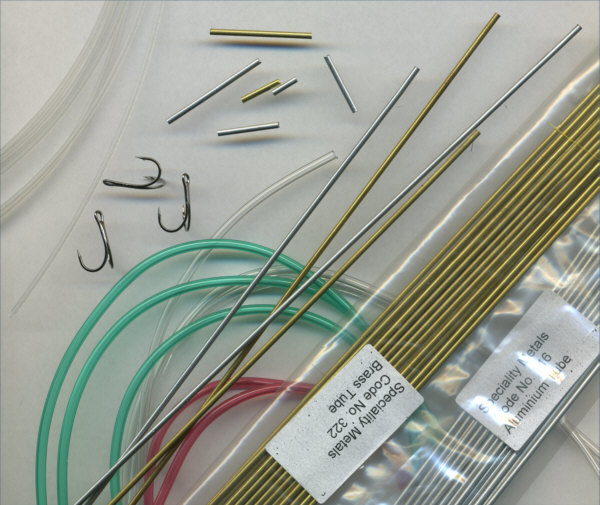
Tube Fly Components
Supplier:
Tube Fly Tubing
2. Metal or nylon tubing for
use as a liner inside the PVC tubing. The use of such a liner provides a
firm base on which to dress the fly and, by using liners in different
materials - nylon for the lightest of tube flies, through the medium
weight aluminium to the heavier brass tube - we are able to vary the weight
of our tube flies.
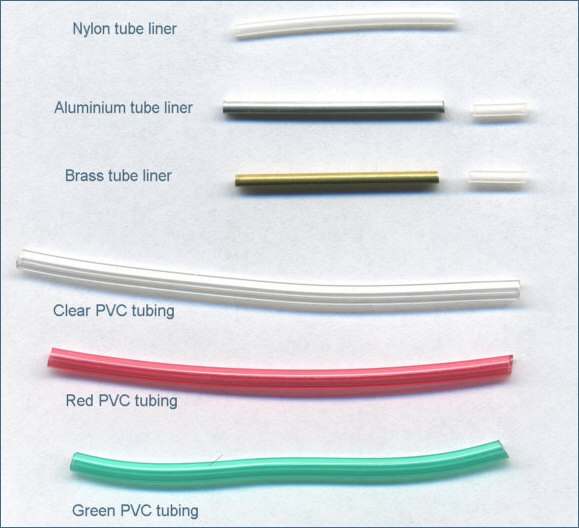
Tube Flies - step 1
It is also possible to vary the balance of the fly by
using varying lengths of liner inside the PVC. For example, the
use of a short length of metal tube positioned towards the front end of
the tube provides a counterbalance for the hook at the tail, allowing
the fly to swim on an even keel. It is also possible to use the liners
in various combinations to further vary the balance and weight of the
fly, e.g. we might use a short length of brass between two lengths of
nylon. Nylon tubing with an outside diameter of around 1.2mm is widely
available for use as a liner for traditional aluminium and brass tubes.
Metal tubing, in both brass and aluminium, was found with an outside
diameter of 1.4 mm, fine enough to be slid into the PVC tubing as a
liner. The metal tubing was supplied in twelve inch lengths, allowing it
to be cut to any desired length but it should be noted that the cut ends
must be carefully deburred before use as a tube fly liner. For cutting
and deburring I use an electric rotary cutting and grinding tool similar
to that made by Dremmel. It is also necessary to insert a short length
of nylon liner, secured with a drop of superglue, at the head of metal lined tubes to shield the nylon
leader from the sharp tube ends. supplier:
Speciality Metals
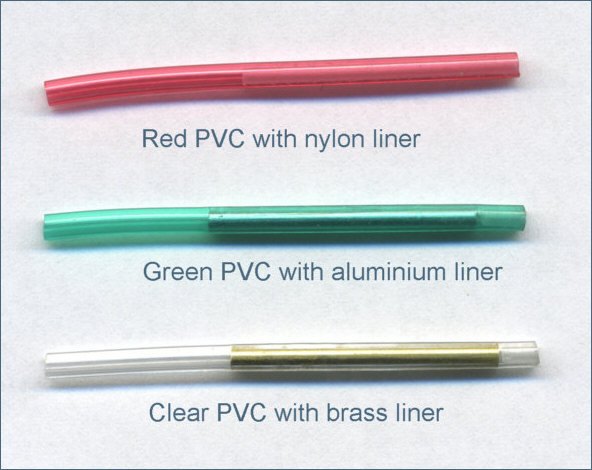
Tube Flies - step 2
3. The integral hook socket at the
rear of the PVC tube holds single, double or treble hooks securely. I
have used both trebles and doubles (Partridge Big Mouth Doubles) in the
accompanying examples.
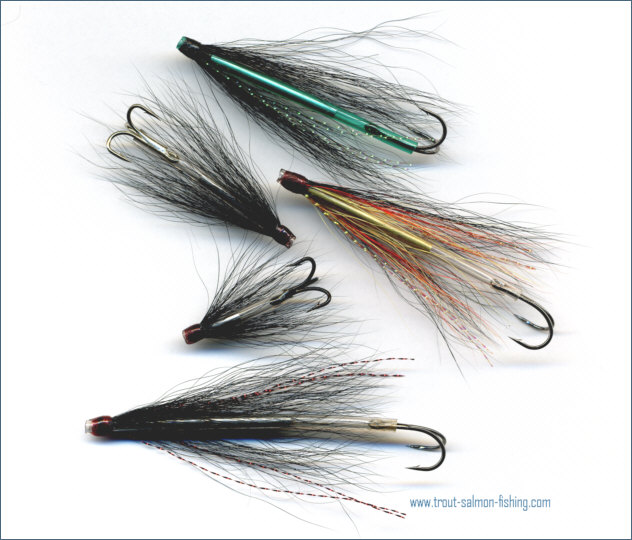
Assorted Tube Flies
Note: The above experiments preceded the development of Gray's Needle
Tubes
NEEDLE TUBE FLY
The latest developments in tube flies from Grays of
Kilsyth
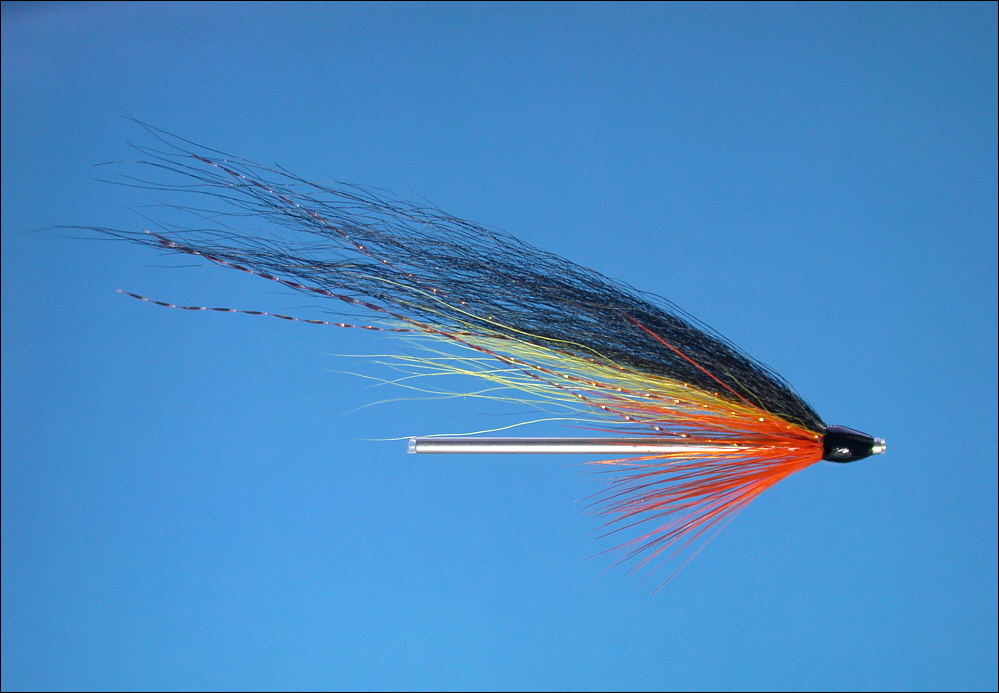
Read about the
New Needle Tube Flies, slim stainless steel tubes developed and
made in Scotland by Grays of Kilsyth. The new
needle tube flies
have won international acclaim, recording spectacular catches of
Atlantic salmon, steelhead and sea trout ....
read more
For the latest micro tube developments see
Needle Tube Flies
See also
How to make a knot guard (or swing tube) for a Free Swinging Tube
Fly Hook
more fishing
articles
|